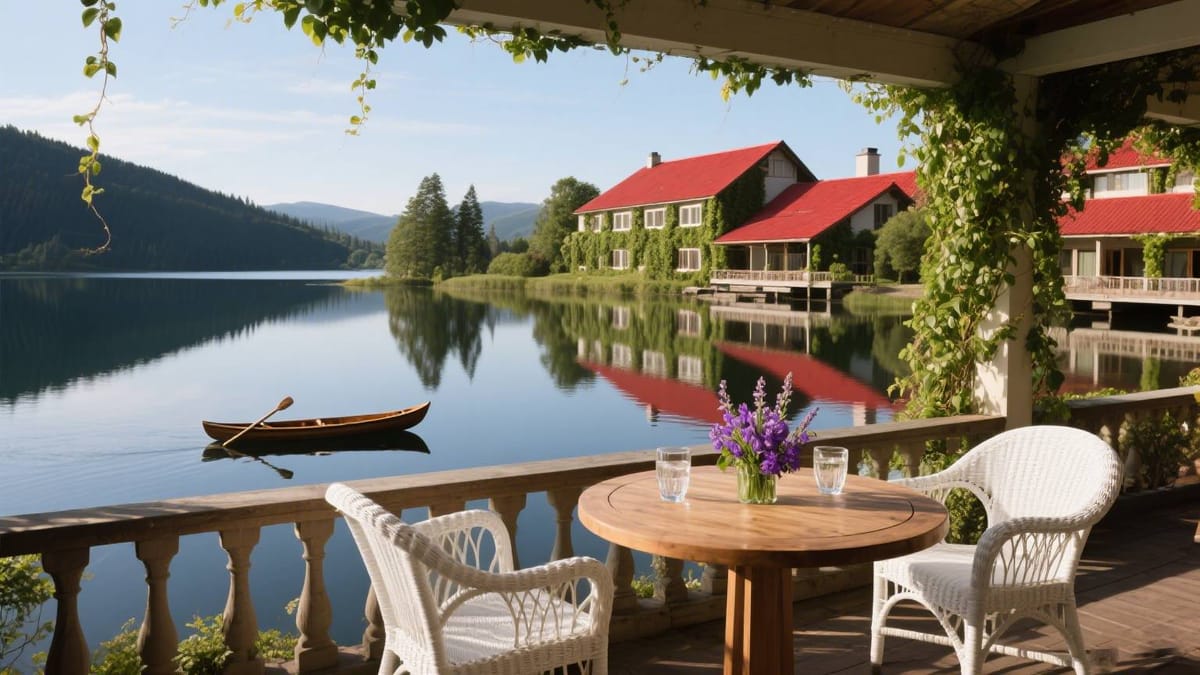Travelers now skip busy schedules and rushed stops. They seek real experiences, genuine connections, and space to unwind. This change sparked slow tourism—a growing movement. For hotels, embracing this approach boosts guest happiness and keeps guests coming back. It’s more than a trend; it reflects a shift toward mindful, green travel
What Is Slow Tourism?
Slow tourism is an approach to travel that values quality over quantity. It encourages visitors to immerse themselves in local culture, savor authentic experiences, and reduce the environmental footprint of their journeys. The concept originated from the slow food movement, which promoted mindful eating and sustainable sourcing. Applied to travel, it means taking the time to understand a place rather than rushing to tick off attractions.
Key principles of slow tourism include:
- Spending longer periods in one destination
- Building deeper connections with local culture
- Choosing sustainable transportation and accommodations
- Prioritizing wellness and mindfulness during the trip
Travelers who prefer this style often look for unique accommodations, personalized services, and chances to experience daily life as a local. For hotel operators, this trend highlights the importance of reimagining how they provide meaningful and engaging experiences.
Why Hotels Should Focus on Slow Tourism
Guests expect more than a bed and a meal. They want hotels to be a gateway to local life, a place where they feel relaxed and engaged. Slow tourism provides this opportunity.
- Enhances Guest Experience
By aligning with slow travel, hotels offer richer, more memorable stays. Longer visits mean guests interact more with the property and the staff, creating stronger emotional bonds. - Promotes Sustainability
Encouraging extended stays reduces the frequency of transportation and helps limit the environmental impact. Hotels that adopt eco-friendly practices also gain favor with conscious travelers. - Boosts Revenue Stability
Longer stays reduce room turnover costs and provide consistent occupancy. This approach can help hotels maintain profitability without deep discounting. - Supports Local Economies
Guests engaged in slow tourism spend more on local food, art, and experiences. Hotels that connect guests with nearby businesses strengthen community ties while adding value to their brand.
How Hotels Can Embrace Slow Tourism
Integrating slow tourism into your property means fostering an atmosphere where guests can truly unwind, connect deeply, and engage authentically with their surroundings. Here are actionable steps that any hotel—whether a boutique inn, a resort, or an urban retreat—can take to embrace this mindful approach:
1. Design Packages for Longer Stays
Slow travelers are looking for depth, not speed. Encourage them to extend their visit by offering discounted weekly rates. For example, stay three nights and get one free offer, or all-inclusive slow travel packages. These packages can include:
- Local dining experiences featuring regional dishes
- Guided cultural tours, such as heritage walks or museum visits
- Hand-made activities like pottery classes or traditional cooking sessions
Such packages make it easy for guests to enjoy the journey without the stress of planning.
2. Curate Authentic Local Experiences
One of the main goals of slow tourism is to immerse travelers in local culture. Hotels can become the bridge to this experience by:
- Partnering with local artisans for craft workshops or art exhibitions
- Arranging farm visits or wine tasting tours with nearby vineyards
- Offering language or cultural classes for guests interested in deeper engagement
This not only enhances the guest experience but also supports local communities, making your hotel part of a sustainable travel ecosystem.
3. Help Guests Relax and Unwind
Slow travel is all about giving guests time to recharge and refresh. To support their well-being, your hotel can:
- Host daily yoga or meditation classes
- Create quiet spaces—like reading nooks, gardens, or scenic terraces
- Offer spa treatments made with local, natural ingredients
- Organize digital detox activities to help guests unplug and unwind
These touches are perfect for travelers looking to restore balance and find calm during their stay.
4. Go Green and Show Your Sustainability
Travelers today care about the planet. Hotels can match this by:
- sing refillable soap and shampoo bottles (no plastic waste)
- Letting guests skip daily linen changes to save water
- Adding EV chargers and lending bikes for clean transport
- Buying food and drinks from nearby farms and eco-friendly suppliers
Tell guests about these steps on your website and in emails. People trust hotels that prove they’re serious about protecting the environment.
5. Implement Smart Technology for Guest Convenience
Technology may seem at odds with the idea of slow travel, but smart solutions can simplify processes and free up staff to offer personalized services. Examples include:
- Self-check-in kiosks or mobile check-in options for a stress-free arrival
- Digital concierge services for local experience recommendations
- Automated room controls that enhance energy efficiency while providing comfort
These tools create a seamless experience, leaving guests with more time to enjoy the destination.
6. Add Flexibility to Enhance Comfort
Slow travelers value the freedom to plan their day without rigid schedules. Hotels can deliver flexibility by:
- Allowing late check-outs or early check-ins when possible
- Offering “anytime breakfast” options rather than fixed dining hours
- Providing easy booking modifications without penalties
Flexibility removes stress and gives guests control over their own pace, aligning perfectly with the slow tourism philosophy.
7. Offer Engaging On-Site Experiences
Not every guest wants to venture out each day. Bring local culture to your property with simple yet meaningful activities like:
- Host cozy evening storytelling sessions featuring local tales
- Set up cooking demos using fresh, seasonal ingredients
- Invite musicians or dancers for casual cultural performances
These small touches help guests feel more connected to the destination—and turn their stay into something truly special.
8. Tell a Story Through Design
The physical environment plays a major role in creating a slow travel atmosphere. Incorporate natural materials, local art, and calming color schemes into your interiors. Use signage and decor to share the history of the region. Guests appreciate staying somewhere that feels connected to the place, not just a generic space.
Addressing Common Concerns About Slow Tourism
Some hoteliers worry that guests might spend less the longer they stay. In reality, slow travelers often seek more experiential and meaningful interactions. They are also willing to pay for personalized and enriched travel experiences.
Another concern for hoteliers is operational complexity. However, longer stays often lead to less frequent room cleaning, which reduces labor and laundry costs. By focusing on quality over quantity, hotels can maintain exceptional service without overspending on resources.
Examples of Slow Tourism Destinations
Some spots really get slow travel. They offer real, relaxed experiences. Hotel managers can learn from them to create similar moments for guests.
1. Tuscany, Italy
When people think of slow travel, Tuscany often comes first. Its vineyards, old farmhouses, and historic villages make visitors slow down. Many stay a week or longer. They go wine tasting, make pasta, or hunt for truffles. They don’t rush. They really live the local way.
Hotels can learn from this: Team up with local food makers and artists. Let guests taste your area’s heritage. Offer longer stays with cooking classes or cultural tours. It makes trips memorable.
2. Kyoto, Japan
Kyoto feels different from fast-paced Tokyo. Time moves slower here. It’s perfect for tea ceremonies, walks in bamboo forests, and temple visits. Many small hotels use traditional designs—think tatami rooms. They offer activities like calligraphy or trying on kimonos. Guests leave with stories, not just photos.
Here’s the key: Use local traditions in your design. Offer real cultural activities. Help guests connect deeply with the place.
3. Ubud, Bali
Ubud is a peaceful escape. Rice fields and forests surround it. It’s known for yoga, spa treatments, and fresh, local food. Resorts build stays around wellness. Guests unplug and recharge.
What hotels can do: Wellness isn’t just for big resorts. Smaller places can offer yoga, quiet meditation spots, or nature walks. Add healthy food options. Guests will love the balance.
The Future of Hospitality
Slow tourism isn’t just a fad. It shows what guests really want now. People care more about traveling thoughtfully, protecting the planet, and finding peace. Hotels that start early will get noticed in a crowded field, keep guests coming back, and earn steady income.
Adding slow travel ideas to your hotel isn’t just for ads. It’s a smart bet on staying important, making guests happy, and doing right by the environment. Hotel owners who jump on this today will help decide where travel goes next.

